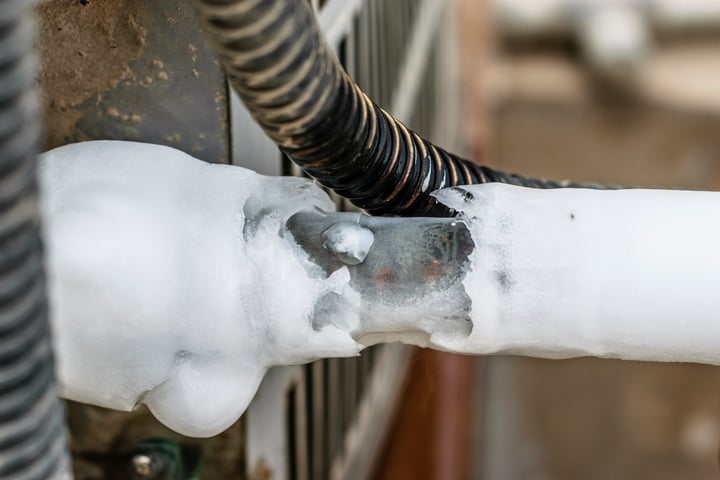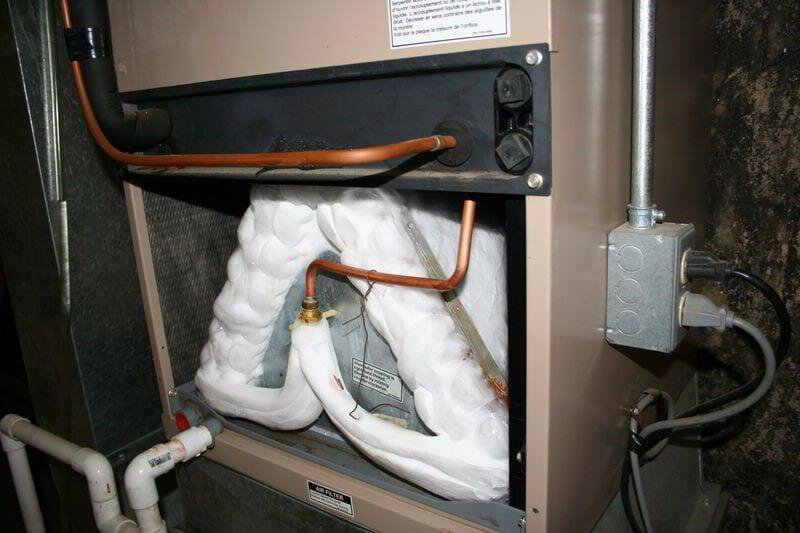Handling a Frozen AC Pipe - Guidance for Resolving the Issue
Handling a Frozen AC Pipe - Guidance for Resolving the Issue
Blog Article
Listed here down the page you can discover more incredibly good insight around What Do I Do If My AC Pipe Is Frozen.

Introduction
Uncovering that your AC pipeline is iced up can be worrying, particularly during warm summer season when you depend on your ac system one of the most. Comprehending what to do in such a circumstance is essential to stop further damage to your air conditioning system and ensure your comfort indoors.
Recognizing the Causes
Numerous elements can add to the cold of an a/c pipeline. Understanding these reasons can aid you attend to the concern properly.
Absence of Airflow
One typical source of a frozen a/c pipeline is inadequate airflow. When the air movement over the evaporator coil is restricted, it can trigger the coil to go down below freezing temperature level, causing ice development on the pipeline.
Reduced Refrigerant Levels
Insufficient cooling agent degrees in your AC system can additionally result in a frozen pipeline. Reduced refrigerant degrees can create the pressure in the system to drop, leading to the cold of wetness on the evaporator coil.
Winter Conditions
In chillier environments, freezing temperatures outside can contribute to the freezing of a/c pipelines. If your air conditioning unit is not appropriately protected or if there are leakages in the ductwork, chilly air can infiltrate the system, creating the pipe to freeze.
Dirty Air Filters
Filthy or clogged air filters can restrict air flow in your a/c system, leading to different issues, including a frozen pipeline. It's important to replace or clean your air filterings system routinely to make sure correct air flow and prevent ice build-up.
Indicators of a Frozen AC Pipe
Identifying the signs of an icy air conditioner pipeline is essential for timely action.
Lowered Airflow
If you see a significant decline in air flow from your vents, it might indicate a frozen pipe.
Ice Buildup on the Pipe
Visible ice build-up on the refrigerant line or the evaporator coil is a clear indicator of a frozen air conditioning pipeline.
Unusual Sounds from the Unit
Uncommon audios, such as hissing or gurgling, coming from your AC system can signify that there's ice present on the pipe.
Immediate Actions to Take
When confronted with a frozen air conditioner pipe, it's important to act swiftly to avoid more damages to your air conditioning system.
Turning off the air conditioner
The primary step is to shut off your a/c to stop the system from running and intensifying the problem.
Checking for Blockages
Evaluate the area around the interior system for any type of obstructions that may be obstructing air flow, such as furnishings or drapes.
Defrosting the Pipe
You can utilize mild techniques like putting towels taken in warm water around the frozen pipe to assist thaw it slowly.
Preventive Measures
Taking preventive measures can assist prevent future events of an icy AC pipeline.
Routine Maintenance Checks
Set up routine maintenance contact an expert HVAC service technician to ensure that your air conditioner system is running effectively.
Changing Air Filters
Consistently replace or clean your air filters to stop airflow constraints and maintain ideal efficiency.
Insulating Exposed Pipes
If your a/c pipelines are subjected to cool temperature levels, consider protecting them to stop cold during winter months.
Seeking Professional Help
If DIY approaches stop working to solve the concern or if you're unclear about how to proceed, it's best to seek support from a qualified HVAC specialist.
When DIY Methods Fail
If your attempts to thaw the pipeline or address other problems are unsuccessful, it's time to hire an expert.
Importance of Hiring a Professional HVAC Technician
A certified HVAC service technician has the competence and devices necessary to detect and fix issues with your AC system safely and properly.
Conclusion
Handling an icy air conditioner pipe can be an aggravating experience, but understanding how to respond can assist minimize damage and restore comfort to your home. By comprehending the causes, identifying the indications, and taking punctual action, you can properly address the problem and protect against future occurrences.
Frozen AC Line: Why It Happens & What To Do About It
A frozen AC line can be a rather peculiar sight in a place like Phoenix, Arizona where nothing ever freezes. In this post, we’ll discuss what makes an air conditioner line frozen – and what you can do about it.
Dirty Air Filters
Did you know that you should be cleaning or replacing your air filters on a monthly basis? Failing to do this can result in airflow issues that, in turn, cause your evaporator coils and lines to freeze over. You’ll notice a buildup of ice on both components, although the buildup on your pipes will, of course, be more evident unless you open your air condition up to reveal the coils.
What To Do About It
Give your air filter a good cleaning if it’s reusable. If not, replace the filter outright. Next, switch your air conditioner’s fan setting on and leave it there for 2-3 hours. This will draw warm air in, helping to thaw your evaporator coil. You can also check out this article for some tips on cleaning the coils themselves if you’d like to speed the process up. Before you switch the unit back to its normal state, make sure the supply vents are completely unobstructed and free of dust or other debris.
If you keep having this issue even after replacing your filters regularly, contact a local HVAC repair company and have them inspect your evaporator coil, ductwork, and any other components that may be at fault. If you live in the Phoenix, Arizona area, give American Home Water and Air a call.
Low Refrigerant Levels/Leakage
What To Do About It
Contrary to what air conditioner “recharge” companies often tell their clients about refrigerant, it should never need to be simply refilled. You see, refrigerant runs in what experts refer to as a “closed loop.” Refrigerant really shouldn’t be leaving that loop. If it is, you’ve got a leak.
Paying someone to come and pump more refrigerant into your system (aka “recharge” it) isn’t the solution. Doing that will simply kick the can down the road. Besides, refrigerant leaks can be harmful to the environment and people in your home.
Rather, you need to take care of the leak with the help of a technician. Check out this article for some more information about dealing with air conditioners that are leaking refrigerant. Before you contact a technician, switch your thermostat to the off position. Then, switch the fan setting on and let it run for 2-3 hours so the unit can thaw.
Improper Temperature Setting
Improper temperature settings can also cause a drop in your air conditioner’s pressure. What many people don’t realize is that air conditioners are actually designed to run when temperatures have fallen above roughly 60 degrees Fahrenheit. If you run the unit when it’s cold outside, you’ll run into many issues, including frozen components.

Do you like more info about Why Is Ice On My Outside Air Conditione? Put a short review below. We will be delighted to see your reactions about this blog entry. In hopes that you visit us again in the future. Enjoyed reading our piece? Please share it. Let another person discover it. Thanks so much for taking the time to read it.
Maintenance Sign-Up Report this page